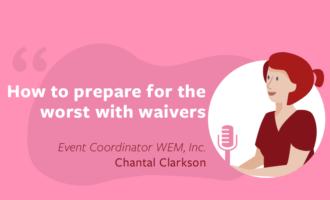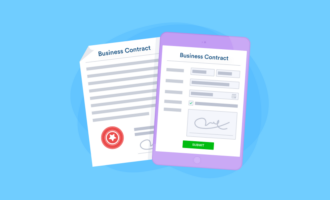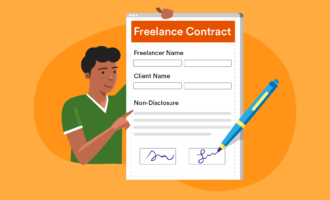Negotiating a contract is as much about listening as talking. Each of the parties is seeking advantageous terms, but a negotiation isn’t a contest. A “winning” negotiation results in a fair contract that will sustain a mutually beneficial business relationship.
A contract is too important to rush the negotiations. It’s OK to take your time, even when the other party is impatient.
The more complex the contract, the longer it will take to come to an agreement. Expect to go back and forth with edits and revisions to various clauses, such as the court jurisdiction where claims have to be litigated (though the goal of a good contract is to make litigation unnecessary).
For example, let’s say you live and work in Hartford, Connecticut, and you’re negotiating for graphic design services with a company located in Brooklyn. They demand a choice of venue clause that specifies the jurisdiction is Kings County, which is convenient to them. You could insist on jurisdiction in Hartford County, or you could agree to Kings County in exchange for something else. Or you both might compromise on binding arbitration, which can be wherever is convenient to you both.
Begin your contract negotiation by suggesting each party outline the terms and conditions they’re seeking. Create bullet points for items, such as what services or products will be provided, the price, the deadlines, any required pre-payment or the deposit, and what must be completed or delivered before the balance is due. The more specific the contract is, the easier it is for everyone concerned to clearly see the big picture.
The next stage after agreeing on broad terms is a deep dive into the details of individual clauses. It’s a good practice to tackle the easiest items first. The “offer-concession” strategy is tried and true, as long as everyone acts in good faith. Make an offer you think might be acceptable to the other party, but leave yourself wiggle room to adjust based on their counteroffer.
For instance, the other party might want to be paid within 15 days, but you’d prefer 45. You might be able to meet in the middle at 30 days, which will set the tone for the rest of the contract negotiations. Coming to an agreement on small items early on will help when it’s time to negotiate trickier contract clauses, like indemnification.
It’s also important to remember that the first-draft contract you receive from the other party is just that — a draft. In business-to-business transactions, negotiations are expected. This is a starting point. Everything in the contract can be negotiated.
There is some advantage to submitting the initial draft contract. Some attorneys believe that whoever drafts the initial draft agreement has the most influence on whatever is ultimately negotiated. It’s an honest opportunity to frame the contract in a way that’s more favorable to you.
Send my document for signature
File type is not allowed.
Maximum file size limit exceeded. (5MB)
Something went wrong.
How to get stalled negotiations moving
When sending emails back and forth gets you nowhere, it’s time to pick up the phone, video chat, or even meet in person. Emails become problematic when you’re at a negotiating stalemate. It’s too easy for the receiving party to misunderstand your tone or infer something you didn’t intend. There’s always a risk of coming across the wrong way and tanking an otherwise salvageable deal.
Talk it out with the other party. Remind them they stand to gain as much from the deal as you do. A live conversation can go a long way toward clarifying expectations and getting both parties on the same page.
Above all, be reasonable. In the payment terms example, some parties may not want to pay for 60 days, while the other party may want payment 30 days from the date of delivery. However, if you’re contracting with an individual or small business for services, the extra 30 days can have a big impact on their cash flow, particularly for larger transactions. Similarly, if you’re a small business demanding payment in 15 days from a large corporation, it may be nearly impossible for them to rush through an invoice when the standard procedure takes 30 days.
When the other party is taking a hard line on an issue, ask why instead of demanding they agree to your terms. Questions will open up the issue for discussion and may help you come to an agreement.
Above all, end the contract negotiations on a positive note. You want both parties to leave the figurative negotiating table feeling that the concessions they made got them a fair deal. This fosters a positive relationship for even bigger opportunities for you both in the future.
For more information, check out our complete guide on how to write a contract.
AS ALWAYS, CONSULT AN ATTORNEY BEFORE RELYING ON ANY FORM CONTRACT OR CONTRACT TEMPLATE. THE CONTENT ABOVE IS FOR INFORMATIONAL PURPOSES ONLY.
































Send Comment: